First-Timer’s Guide to the Faroe Islands (Travel Tips & FAQ)
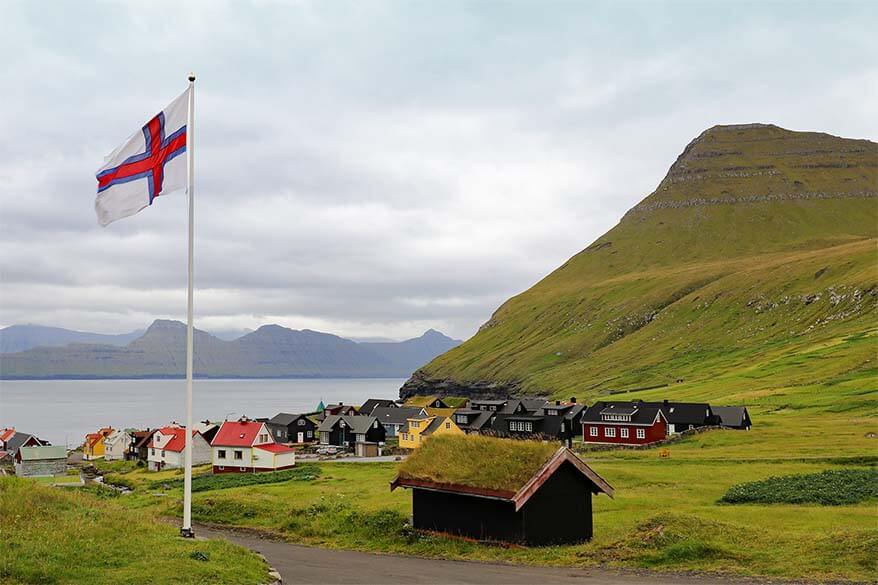
This site contains affiliate links, which means that we may earn a small commission, at no cost to you, for qualifying purchases. It supports the work that goes into keeping this content free. Thanks for reading! More info: Privacy Policy.
Planning your first trip to the Faroe Islands can be overwhelming. What kind of weather can you expect in the Faroe Islands? What are the best things to see and the best places to stay? How to get to the Faroe Islands and how to get around? How expensive is food on the Faroe Islands?…
We had so many questions before visiting the Faroe Islands, but never found all the answers in one place. Yet, Faroe Islands is not a typical travel destination where you can just show up and hope to make the best of it. So it’s really important to do some research so that you know what to expect. And – I can’t stress this enough – you really have to book your accommodations well in advance!
Based on our personal experience I created this practical guide to the Faroe Islands that should answer all your questions. Find out!
P.S. If you don’t find an answer to your question in this post, feel free to post a reply below and I’ll try to help.
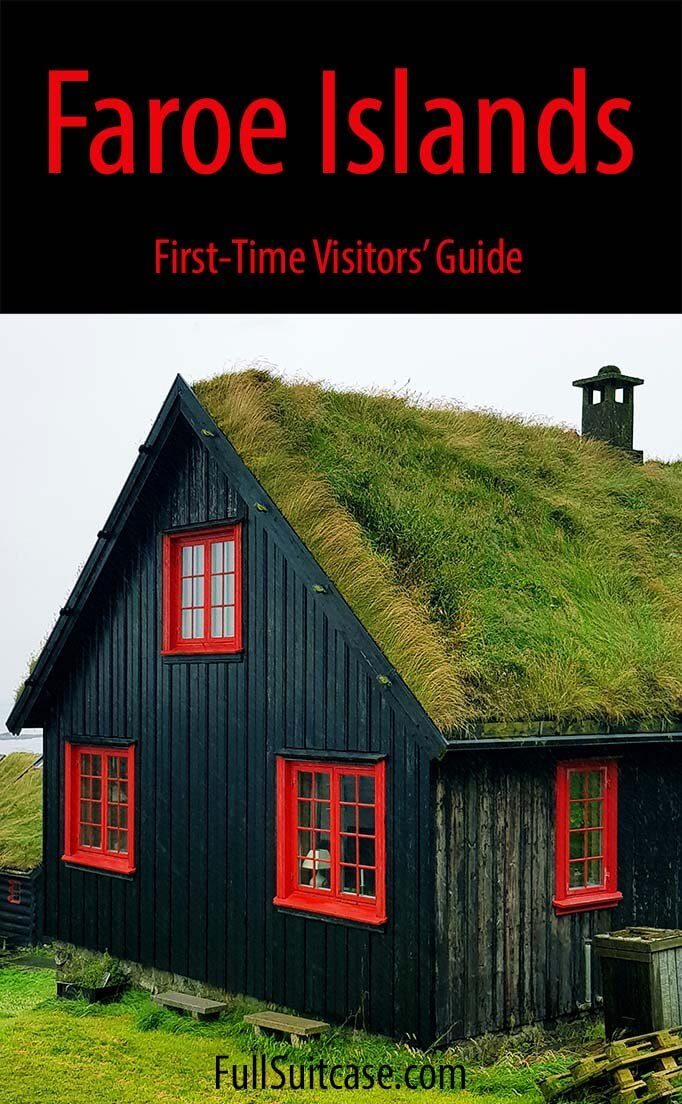
Where are the Faroe Islands
Faroe Islands is an archipelago of 18 islands, located in the Atlantic Ocean. If you look at the map, you’ll see that The Faroe are pretty much in the middle between Scotland, Norway, and Iceland.
How to get to the Faroe Islands
Faroe islands are closer than you think. The easiest way to get to the Faroe Islands is by plane. There are daily direct flights to Copenhagen in Denmark (2hrs), but also short flights from Edinburgh (UK), Bergen (Norway), and Reykjavik (Iceland).
If you prefer the excitement of seeing land for the first time after days spent at sea, you can opt to arrive in the style of the greatest discoverers. In that case, you can opt to go to the Faroe Islands by boat. Smyril Line ferry travels between Denmark and Iceland with a short stop in the Faroe Islands.
This passenger and car ferry looks like an attractive slow travel option and a great way to get to The Faroe, especially because you can bring your own car. However, consider the time that it takes and the costs associated with it (driving to Denmark, hotel accommodations, tickets for the ferry for you and your car, cabins to sleep in, food onboard). Also, there is always a possibility of getting seriously seasick on this multi-day journey…
We did the math and found that it made no financial sense whatsoever for our family of 5 to take this boat to the Faroe Islands. Not to mention the fact that it would add several days to the journey.
TIP: If you decide to arrive in the Faroe Islands by boat, make sure to book it in advance!
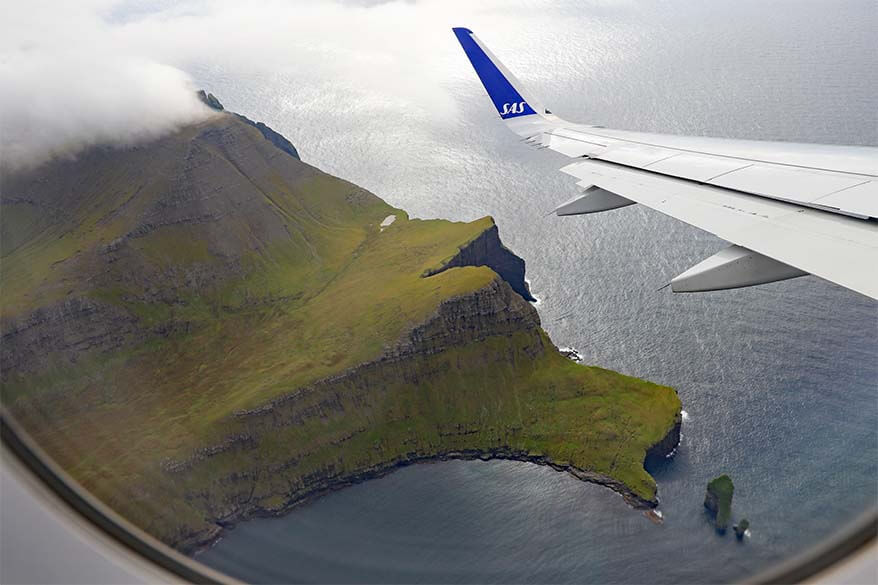
Do I need a visa/passport for the Faroe Islands?
Faroe Islands are not part of the Schengen zone, so visitors from some countries might require a valid visa. I had a slight panic attack when, on the way to the airport, I checked a website of a Dutch travel agency that said that we Europeans also need a passport when traveling to the Faroe Islands. Our passports were safely left at home and we only had our Belgian ID cards with us…
After more research on more reputable websites, I found that citizens from most EU countries don’t need a passport in the Faroe Islands – ID card is sufficient (information is correct at the time of writing – 2018). The funny thing is that nobody ever checked even our ID cards. So all that stress was for nothing and reminded me that, sadly, not everything you read on the Internet is true.
You can find more information in regard to the required documents on the official tourism board website. Alternatively, check with the local Danish embassy in your country. Just remember, the Faroe Islands are not part of the EU and have different visa requirements than Denmark.
Book your Faroe Islands accommodation before you book anything else
My quick search for available accommodations on the Faroe Islands was very eye-opening. With just a handful of hotels, a few B&B’s, and several private rentals, Faroe Islands had a grand total of 74 properties for us to choose from. Then I filtered my search for accommodations for 5 people and had just 13 properties left. 13!!!
When I finally filled in our travel dates and got a warning that 98% of all accommodations for August were fully booked… What was left was a tent in the camping and a house on Sandur island that we weren’t even planning to visit…
At this point, I realized that planning a summer trip to the Faroe Islands four months in advance is clearly much too late. Yet, we were determined to go…
What followed was the craziest trip planning method I have ever used. I searched Booking.com for every available accommodation for every single night during the entire month of August. We even searched for Airbnb even though we never use them, but that didn’t help much… I then put it all in a spreadsheet and made a 10-day Faroe Islands itinerary based on available accommodations.
Only after I booked the hotels and made sure we had a roof above our heads for every single night, I finally booked the flights and reserved a rental car.
TIP: Check for the availability of accommodations before you book your trip to the Faroe Islands, especially if you are planning to visit in July or August.
If you are still not convinced, here is a story for you. We met two young people in our hotel in Torshavn who just arrived in the Faroe Islands without booking anything upfront. They quickly found out that there was nothing available on any island, for days in a row. They were going to every hotel in town begging for a place to stay, I really wonder if they found anything in the end…
Our hosts at another accommodation said that in July and August they get almost daily calls from people looking for last-minute places to stay, while everything is usually fully booked months in advance… So don’t be that person and book in advance.
Best places to stay on the Faroe Islands
The best place to stay on the Faroe Islands is the capital, Torshavn. The reason is quite simple – the majority of hotels and accommodations are located here. Also, pretty much any place that can be reached by car is less than a 1.5-hour drive from Torshavn, so you can base yourself in the city and take day trips. It also gives you complete flexibility to adjust your travel plans to the weather.
However, we found that staying in Torshavn is not ideal for seeing everything. So we opted for a self-drive trip and rented accommodations at several different locations. The main reason is that driving up and down will often mean that you spend 2-4hrs in the car each day, passing many of the same places every time.
In addition, with just 100km/day mileage limit on your rental car, it’s inevitable that you’ll exceed this limit big way if you opt to drive up and down to Torshavn each day.
Also, we noticed that accommodation gets cheaper the further you go from Torshavn, and so does the food at the restaurants. However, once again, there isn’t that much available outside the city – see below.
Here are some of the best places to stay for a self-drive road trip on the Faroe Islands (beyond Torshavn):
- Stay in Gjogv for exploring Eysturoy island. We stayed at Gjaargardur Guesthouse in Gjogv – one of my favorite accommodations of this trip. The rooms here are quite simple, but the location is stunning and so is the food.
- Klaksvik is the best base for exploring the northern islands, including Kalsoy. However, accommodation options here are very limited.
- Staying on Vagar Island makes it easy to explore Vagar and take a day trip to Mykines. It’s also close to the airport, so perfect if you arrive late or have to catch an early flight on the day of your departure. However, also here, there are just a few lodging options.
- We also stayed on Suduroy Island, but I would only add it to your itinerary if you have more than a week in the Faroe Islands and visit on a day tour. Finding a place to stay on that island is very difficult.
LEARN MORE: Best Hotels in the Faroe Islands (complete guide!)
TIP: Using the map below, you can compare hotels and short-term rental accommodations in Torshavn. You can also zoom out and see availability in other places. Simply insert your travel dates and group size, and you’ll see the best deals for your trip. Check it out!
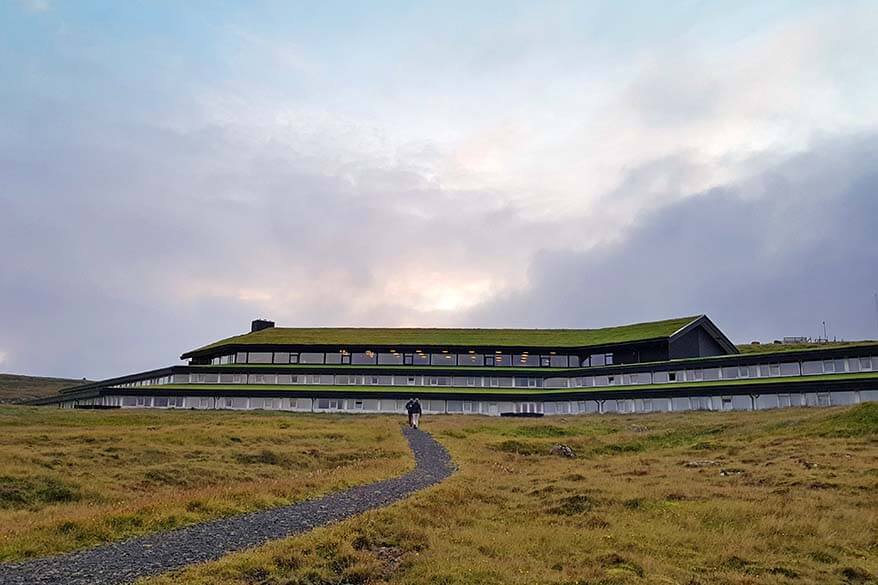
How long should you stay in the Faroe Islands
I think that you really need at least 4-5 days to see some of the main highlights of the Faroe Islands.
Ideally, you stay at least a week. This will give you the time to see all the best places, do some hiking, and maybe do a tour or two (boat trips, hiking, and horse riding are the most popular options).
Here you can find our Faroe Islands itinerary suggestions for any trip from 3 to 9 days.
How to get around on the Faroe Islands
Despite the fact that Faroe Islands consist of 18 different islands, you can easily see a lot in the Faroe Islands by car. Most bigger islands are connected by bridges or tunnels, and there are also (car) ferry connections to the other islands.
Car ferries in the Faroe cannot be booked in advance. You just arrive at the harbour and get your ticket on board. Also, you only have to pay for your trip once, the ticket always includes the return journey. Mykines ferry is for passengers only. It’s also the only ferry on the islands that requires advance reservations.
The Faroe Islands also have a good bus network, so it’s possible to travel between the islands without the car. However, many highlights are not located near big towns, so you’d probably not be able to see everything that you want.
It’s also possible to travel between the islands by helicopter. See more information below.
Here you can find all the practical information as well as ferry and bus timetables for the Faroe Islands.
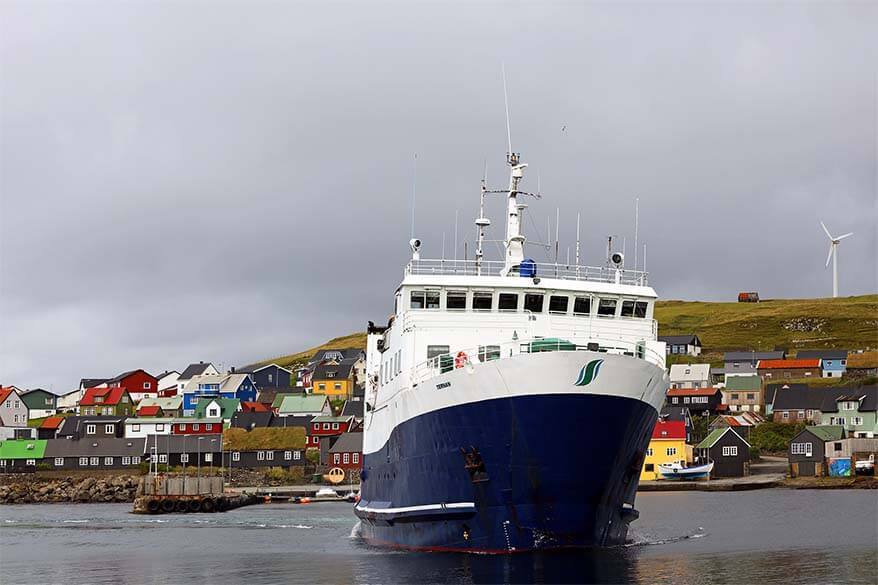
Faroe Islands helicopter
Helicopter is a popular means of transport between the Faroe Islands. Traveling by helicopter is surprisingly cheap as it is subsidized by the government. The cheapest helicopter ride fares cost less than a short taxi ride in London.
However, to prevent tourists from taking too much advantage of this, helicopter rides can only be booked in one direction (no return) for the same day. So if you are considering taking a helicopter to get to one or the other island, keep in mind that you’ll either have to come back by boat, or stay on the island for a few days. Helicopters don’t run daily.
The most popular and easiest to do for tourists is the helicopter to Mykines island. It arrives in Mykines in the morning, allowing you to take a boat back in the evening. However, there are just 12 seats on the helicopter and since recently you can only book the tickets one week in advance. If you do want to book this ride in summer, you’ll probably have to try around midnight of the day when the bookings open.
Note that even if you secure a place on the helicopter, it’s very likely that the boat to come back will be fully booked for that day. So you’d almost have to book the boat tickets first and then hope you can get the helicopter.
Just to complicate things a bit more, the helicopter departs from Vagar airport. Whereas the boat comes back to Sørvágur Harbor, 2km away. So you’d have to figure out where to leave your car and how to get back to it in the evening.
As you can see, trying to get a helicopter to Mykines requires quite some advance planning and lots of flexibility on your side. At the same time, keep in mind, that the boats often get canceled due to stormy weather. And you don’t want to get stuck on Mykines without having arranged accommodation or food in advance. So, as much as it sounded appealing at first, we just decided to take a boat both ways.
If you really want to travel by helicopter in the Faroe Islands, consider flying to some other islands that are not as popular with tourists. All the other helicopter routes allow booking a month in advance. For example, you could take a ferry to Suduroy island, spend a night there, and then take a helicopter to get back to Torshavn the next day.
Here you can find all the timetables and booking information for the Faroe Islands helicopter.
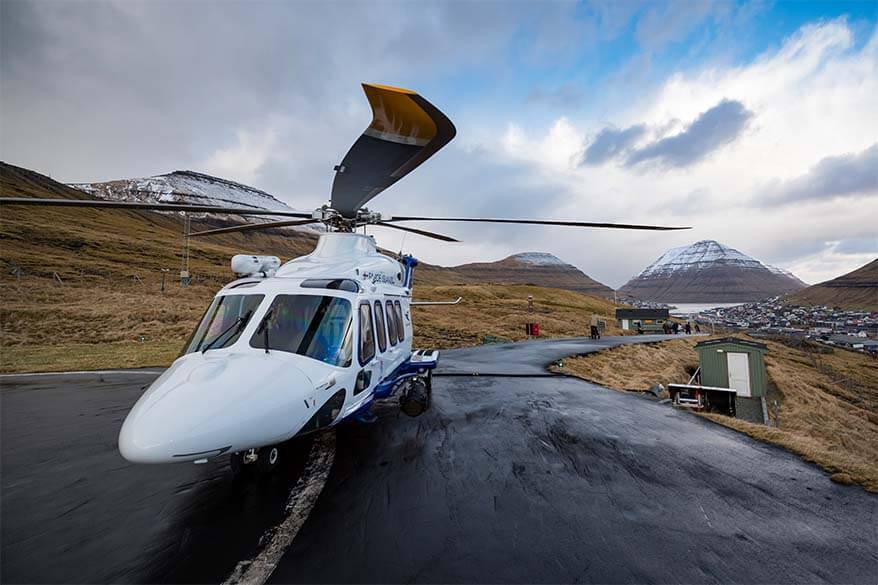
Renting a car on the Faroe islands
If you want to explore the Faroe islands at your own pace, a self-drive trip by rental car is the best way to do it. You don’t need any special car or 4WD in the Faroe Islands (not in summer, anyway). Actually, small cars have advantages as the roads are narrow and some ferries quite small. Since we visited the Faroe Islands with three kids, we rented the biggest 2WD we could find.
There aren’t that many car rental companies available on the Faroe Islands, but we discovered that prices differ a lot. Here you can find the biggest selection of car rental options in the Faroe Islands.
I also recommend checking our favorite website which we use for car hire anywhere in the world. When we traveled, they had an option to rent a car with a big brand that wasn’t featured in the previously mentioned list. It was 30-60% cheaper than any other company offering the exact same car at that moment. This saved us more than 600 EUR.
Also, I kept looking at car rental prices as we got closer to our trip departure date and prices skyrocketed. So book your rental car as soon as you have your flight tickets!
One thing to keep in mind is that for some strange reason most car rental companies in the Faroe Islands seem to have a maximum mileage per day. It’s usually set at 100km/day and they charge extra fees for any additional kilometers. We rented a car for 10 days and drove 1,004km. We exceeded our mileage limit by just 4km(!) and yes, they charged us extra for that.
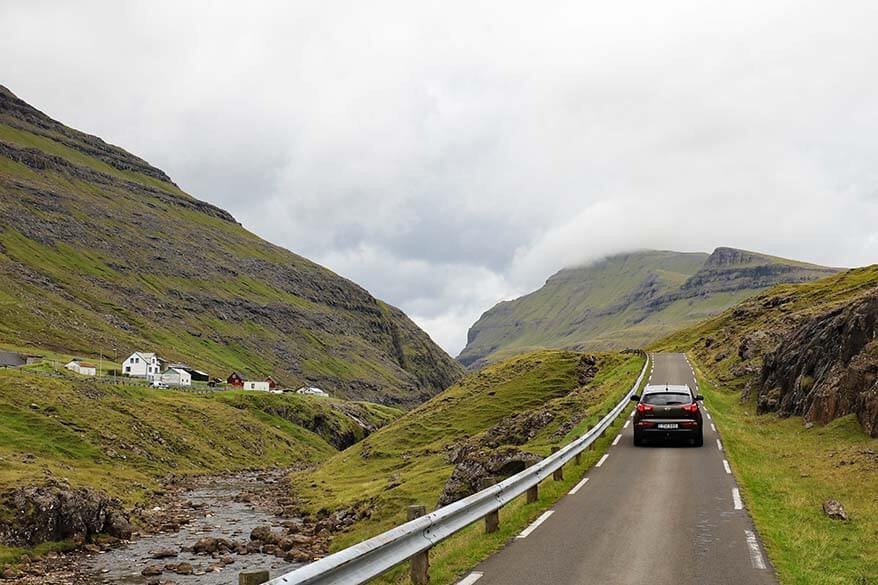
Driving in the Faroe Islands
Faroe Islands have right-hand traffic (same as in the US and most of Europe, except the UK).
Driving on the Faroe Islands is not that difficult and the main roads are generally good. Most bigger roads are wide enough for two cars. However, there are quite a few roads and also dark narrow tunnels that are just wide enough for one car. In those cases, you are expected to pull over to the side that has wider places foreseen especially for this; it’s really self-explanatory actually.
The biggest danger on the roads in the Faroe Islands are probably the sheep. There are many of them and they cross unexpectedly, so I recommend to always slow down if you see any animals next to the road.
Traffic is somewhat busier around Torshavn and other bigger towns but is pretty quiet on the rest of the islands. We haven’t experienced any traffic jams and didn’t see any accidents.
Parking is usually free, but in Torshavn center, there is a time limit of how long you are allowed to stay. Every rental car is equipped with a small clock that you have to adjust to indicate your arrival time.
You should always have your lights on when driving in the Faroe Islands.
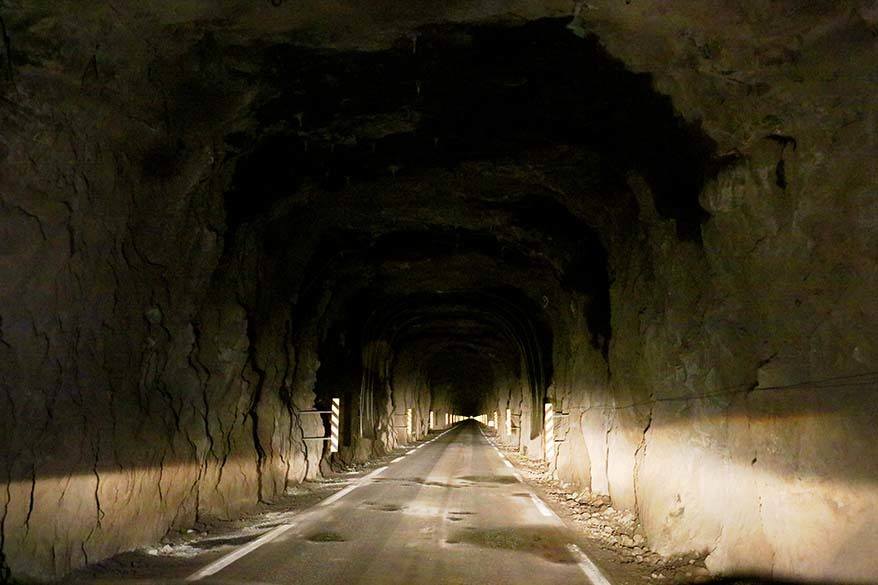
Toll roads on the Faroe Islands
There are several sub-sea toll tunnels on the Faroe Islands that cost 100 DKK (14EUR) for a return trip. You’ll have to pay when driving from Vágar through Vágatunnilin, and driving from Klaksvík through Norðoyatunnilin.
Also the newly opened Eysturoy Tunnel is a toll tunnel. It saves you such a long drive that the toll can be worth it.
In principle, the toll has to be paid at the nearest petrol station. However, most rental cars are equipped with a special transmitter, and this fee will be charged by your car rental company directly from your credit card. Just to be safe, best ask about this when you pick up the car, so that you don’t end up paying twice.
Buttercup routes of the Faroe Islands
Faroe Islands have several particularly scenic routes, called ‘Buttercup routes’. They are indicated by a small green sign with a yellow flower on it. Faroe Islands tourist maps have all these routes indicated in green, so you really can’t miss them.
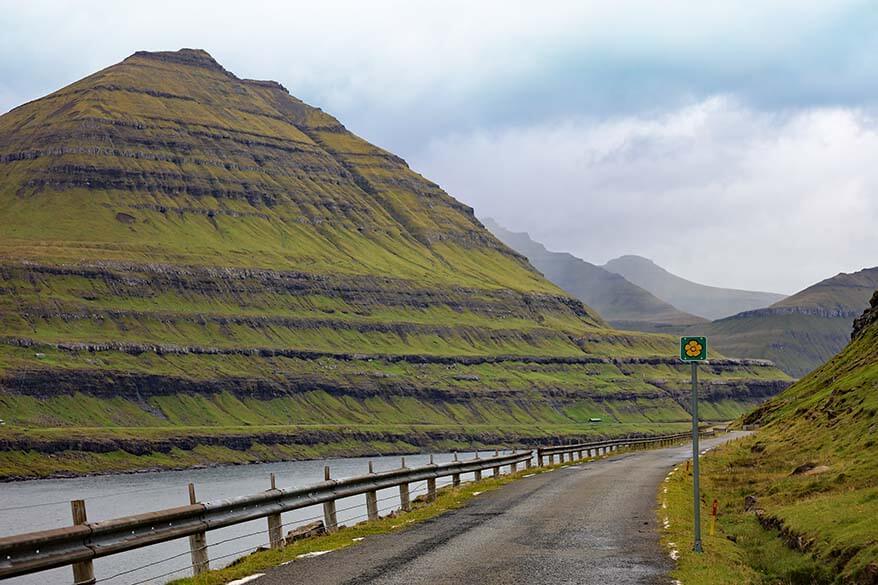
When is the best time to visit the Faroe Islands?
Arguably, every season has its charms, but most people visit the Faroe Islands between May and September. June, July, and August are the most popular months. The weather is at its best and it’s also the season when you can expect to see puffins.
If you visit the Faroe Islands outside the summer season, you’ll have the main landmarks all to yourself. Just keep in mind that facilities outside big towns are really minimal even in summer, so don’t expect much if you are traveling off-season.
Faroe Islands can be magical in winter as well, especially if it’s cold and dry. However, it can also be very wet. The good thing is that the temperatures remain quite mild. Average temperatures in the Faroe Islands in December, January, and February are between 2 and 6 °C (35 – 43°F).
READ ALSO: Best Time to Visit Europe
What kind of weather can I expect in the Faroe Islands?
Faroe Islands have a relatively mild climate. It hardly ever gets really very cold, but it’s not warm either. In winter you’ll have temperatures around 2-6°C (36-43F) and in summer 6-12°C (43-54 F). The biggest difference is the rain – there are twice as many rainy days in December or January as in June. Summer might have the best weather for visiting the Faroe Islands, but keep in mind that a ‘heat wave’ with temperatures over 20°C (68F) is an extremely rare occurrence.
The weather here in the middle of the Atlantic Ocean can be really harsh, but it also changes frequently. It’s not unusual to have rain in one place, mist just a bit down the road, and sunshine another mile further.
We visited the Faroe Islands in August and had maximum temperatures of 12°C (54F) every single day. We experienced all kinds of Faroe weather with everything from blue skies and sunshine, to mist and the most miserable rain I’ve seen in my life, and everything in between…
Mostly we would get all kinds of weather in one day. Just a few days were completely dry and at times even sunny. And one day it was raining pretty much non-stop from early morning till late in the afternoon. Unfortunately, that was the day when we visited Mykines – a place where yo can hardly hide anywhere. We got soaking wet and freezing cold in no time. Rain pants would have been really handy here!
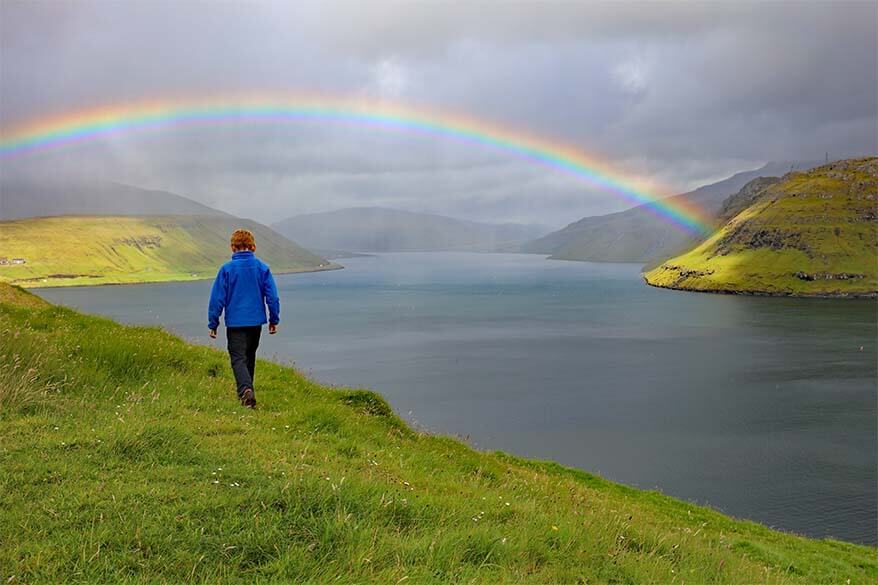
What to wear when visiting the Faroe Islands?
What to wear and what to pack on the Faroe Islands will depend a bit on the season when you travel. In general, you always need good sturdy waterproof footwear (if you plan to do any hiking, hiking boots are a must!). A waterproof jacket is a must in any season and waterproof pants are really nice to have too. Rain ponchos and umbrellas are pretty much useless due to high winds.
Even in summer, you should pack a warm hat, shawl/buff, and gloves. Make sure you have several layers of clothing as the weather changes all the time. We had days where we started out with 4 layers (t-shirt, two sweaters, and a rain jacket), and then went to 1, and back to 4 again.
Most tourists we met at the hotels wore jeans and casual sweaters, but remember that jeans are really the worst type of clothing to wear if it rains. We wore our hiking pants pretty much the entire vacation. They are light and dry quickly. Yet, we really regretted we didn’t take rain pants. When it rains, it pours down, and you get soaking wet in a matter of minutes.
I don’t think your packing list will differ much from summer to winter, just in winter, you’ll need a warmer jacket, warmer socks, and more layers (ideally wool). Thermal merino wool underwear is a must for destinations like the Faroe Islands (I wore mine in August).
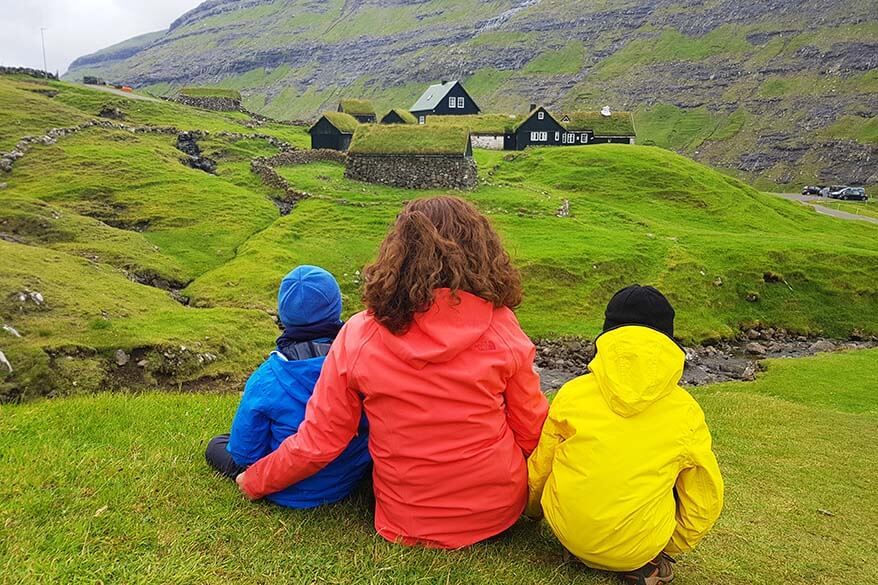
What are the best places to see on the Faroe Islands
The best places to see on the Faroe Islands include Tinganes in Torshavn, Kirkjubøur, Saksun, and Tjornuvik villages, Gjogv, Kallur Lighthouse on Kalsoy Island, Múlafossur Waterfall near Gasadalur, the famous view from Trælanípa hike, the bird cliffs of Vestmanna or Hestur, and of course Mykines Island.
There are obviously many more stunning locations that are well worth a visit, but – in my opinion – the ones listed above are really not to be missed on any visit to the Faroe Islands.
TIP: If you don’t know where to start and don’t want to worry about roads, ferry schedules, or travel planning, consider booking organized day tours.
There are also multi-day packages that bring you to the best places of the Faroe Islands on organized day trips from Torshavn. So you stay in the same hotel every day and have a local guide pick you up for the day. The most popular option is this 6-day guided tour package – it covers all the musts!
An old-fashioned paper travel guide is also nice to have if you have more time to explore the islands or if you want to learn more about the places that you are visiting.
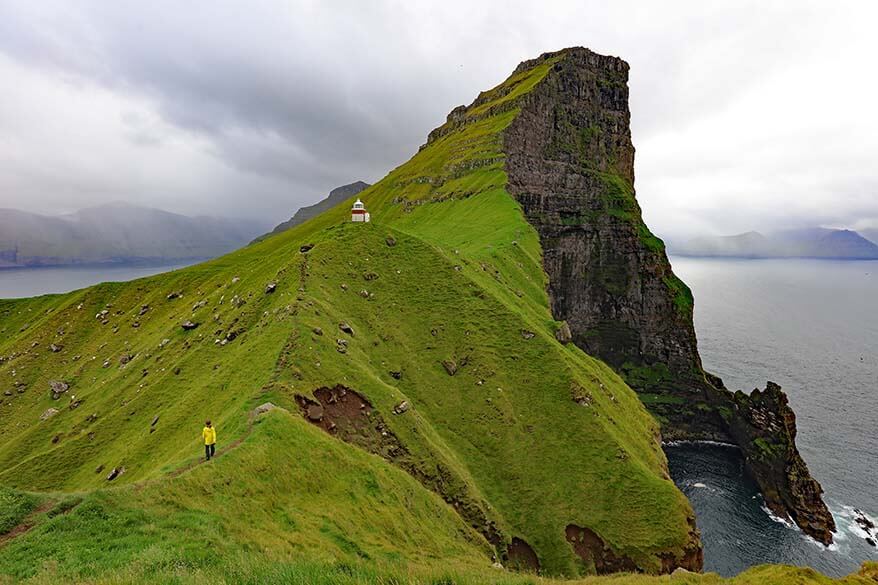
What are the most beautiful hikes of the Faroe Islands
The Faroe Islands have a lot of hiking possibilities. But not all hikes are worth your time equally.
In my opinion, the best hikes of the Faroe Islands are: Villingardalsfjall and Enniberg (Viðoy island), Kallur Lighthouse (Kalsoy island), Trælanípa – Bøsdalafossur (Vagar island), Mykinesholmur (Mykines Island), Saksun – út á Lónna (Streymoy island).
LEARN MORE: Hiking in the Faroe Islands
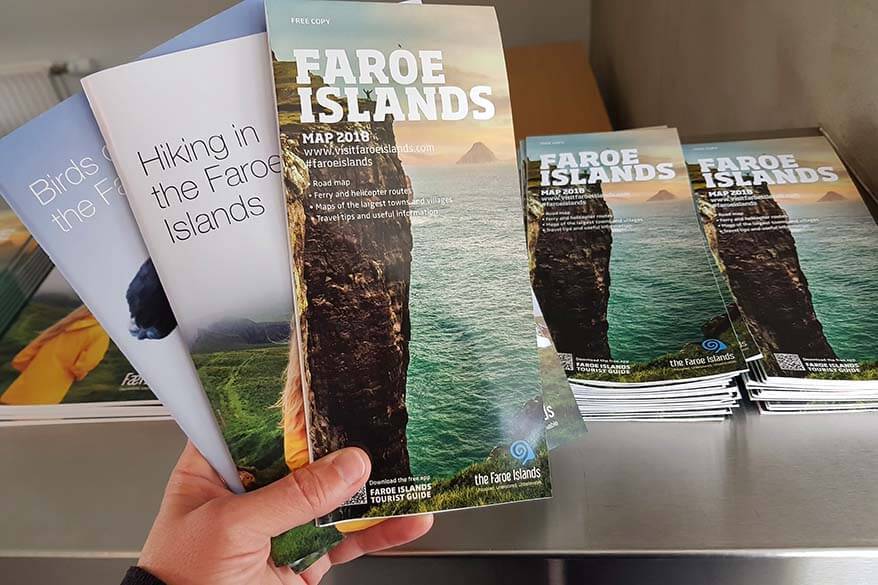
What kind of money do they use on the Faroe Islands and do you need cash?
Faroe Islands use the Danish krona (DKK). You can get some cash from an ATM at the airport or in bigger towns. We found that you don’t really need cash when traveling in the Faroe Islands – pretty much everything can be paid by credit card.
We took some cash because one of the accommodations required cash payment, but that was the only time we used it.
How expensive are the Faroe Islands
Despite its remote location, Faroe Islands are more affordable than I thought. I expected Faroe Islands to be as expensive as Iceland, but was pleasantly surprised that it wasn’t the case.
Just like anywhere else in the world, there are big differences in what food costs at an upscale restaurant in the capital city or a pizzeria in a small town.
After the initial shock of seeing 50-70EUR dishes at some fancy restaurants in Torshavn downtown, somehow we managed to find affordable meals for our family during the whole 10-night stay on the Faroe Islands.
We had a 50 EUR/adult dinner buffet at our hotel in Torshavn, while the evening before we spent just 48 EUR for 5 meals. We paid 12 EUR fish&chips/person in Klaksvik, and a total of 60 EUR for pizza and drinks for the whole family at the best pizza place on the Faroe Islands – Joe Pizza in Hvalvik.
Smidjan restaurant on Vagar island (not far from the airport) also has simple food at normal prices. Kids’ menu costs just around 9 EUR, fish & chips – 12 EUR, the most expensive big pizza – 20EUR.
Fuel is much cheaper on the Faroe Islands than in Western Europe.
Hotel prices in the Faroe Islands are somewhat in line with those in other Scandinavian countries. We paid as much as 310 EUR/ night for a family room including breakfast in Torshavn and as little as 110 EUR/ night for a 3-bedroom house on Suduroy island. Most other accommodations cost us around 200 EUR/night. Note that we traveled with 5 people: 2 adults and 3 kids.
Car rental is quite expensive on the Faroe Islands, but not more than in Iceland or Norway (it’s also much more affordable if booked in advance). We rented a big SUV for 10 days and paid around 830 EUR, which is about the same as we paid in Norway for a somewhat smaller car. Check here for the best car rental prices.
Ferries and public transport are subsidized and therefore not expensive at all. Just to give you an idea, Mykines ferry was the most expensive route we took without a car, it cost 120 DKK (16 EUR)/adult return. Return fare on a ferry to Suduroy island was 225 DKK (30 EUR) for a car and a driver. A 7-day unlimited ferry & bus pass costs 700 DKK (95 EUR).
Buses within Torshavn are free of charge.
Guided tours in the Faroe Islands aren’t cheap, however, they usually include everything and allow you to see a lot in a short time. Here you can find the biggest selection of guided day trips and tours in the Faroe Islands.

Is it easy to find where to eat on the Faroe Islands?
All bigger towns on the Faroe Islands have restaurants and supermarkets. For example, in Torshavn, you’ll find a big shopping center and all types of restaurants: everything from Burger King, upscale restaurants, and everything in between. But it’s not the case outside Torshavn.
Most restaurants in smaller towns are only open in the evenings. There are also many small villages that have no restaurants or even cafés at all.
If you get the Faroe Islands tourist map at the airport, you’ll see that it shows all the facilities, including restaurants and petrol stations. But even then, it’s possible that some restaurants in remote villages are only open in high season, or just on certain days…
To be on the safe side, we always recommend packing a picnic for lunch. It gives you complete flexibility and is truly the best way to not have to worry about finding food along the way.
Where can I buy alcohol on the Faroe Islands?
Just like Iceland, the Faroe Islands have quite strict rules when it comes to buying alcohol. You won’t find alcoholic drinks over 2.8% vol at the supermarkets. All stronger alcoholic beverages are only sold by Rúsdrekkasøla Landsins, which has six shops on the islands.
You can get alcohol at the restaurants, but if you want to buy some, the easiest place to do so is the Duty-Free shop at the airport.
Do they speak English in the Faroe Islands?
The official language on the Faroe Islands is Faroese, but everyone we met on the Faroe spoke perfect English. So you should have no problem communicating with most locals.
Do EU roaming regulations count on the Faroe Islands?
EU roaming regulations do not count on the Faroe Islands (not for us coming from Belgium, in any case). This means that you’ll either have to get a local SIM card or pay roaming fees when using your mobile phone connection in the Faroe Islands.
The good news is that pretty much all accommodations and a few other places like some restaurants and even ferries offer free wi-fi.
Is it safe to travel to the Faroe Islands?
Yes, it’s absolutely safe to travel in the Faroe Islands. In fact, I think the Faroe has the lowest crime rate of any place we’ve ever visited. Probably the biggest danger in the Faroe Islands is going too close to the edge of the cliffs or driving in the mist.
Where can I see puffins in the Faroe Islands?
Before we talk about the best places to see puffins on the Faroe Islands, you should know that you can only see them in summer. Best time to see puffins on the Faroe Islands is from May till late August; if you’re lucky, they might be around from mid-April till mid-September.
Mykines island is without any doubt the best place to see puffins from close by on the Faroe Islands. Vestmanna or RIB62 boat tours go to bird cliffs and you’ll see a lot of puffins as well, however, from a much bigger distance.
There are also big puffin colonies on many other locations all over the Faroe Islands, but the chances to see them from close by are minimal. We spotted puffins in Gjogv, but they were really far.
Here you can book a guided tour to Mykines island with a local.
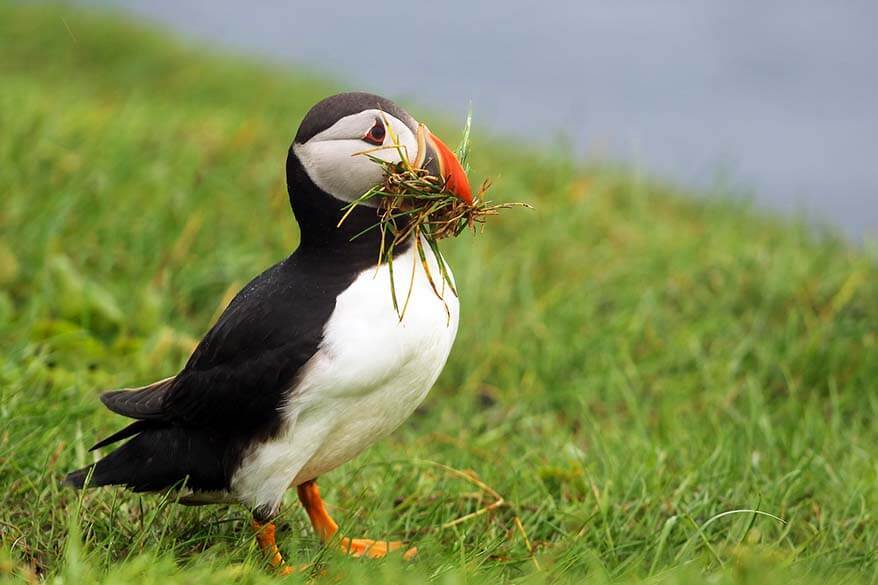
What kind of lenses to pack for photography on the Faroe Islands?
I used two lenses during our Faroe Islands trip: 70-200mm telephoto lens for puffins and a wide-angle 16-35mm lens for landscapes and all the rest. You really need a wide-angle lens for the Faroe Islands!
READ ALSO: Travel Photography Tips
What kind of electrical plugs do they use on the Faroe Islands?
Faroe Islands use European electricity plugs (220-230 volts AC (50 Hz)). If you are coming from outside continental Europe, you’ll need to use European adapter plugs.
Whaling on the Faroe Islands
Unfortunately, the Faroe Islands is one of the few places in the world that still allow whaling. If you travel in the Faroe Islands towards the end of the summer, the chances are high that you’ll be an involuntary witness of whale slaughter.
I don’t want to go into a discussion about whaling, the reasons behind it, and the century-old whaling traditions in the Faroe Islands. I just want to tell you this – if you don’t want to see it, do yourself a favor and don’t stop next to the bay where there are lots of cars parked by the road.
We saw boats in the water and all those smiling families with kids walking along the road to the bay and thought it was some kind of a local market or celebration. By the time we realized what was happening and why the sea was bright red, it was too late… We found ourselves standing on the beach surrounded by tens of dead pilot whales… So the next time we saw hundreds of cars parked by the road and tens of boats in the water, we quickly drove away…
It was a heartbreaking sight for us and I hope and strongly believe that increasing tourism and awareness will make an end to this centuries-old whaling tradition in the Faroe Islands. But in the meantime, as hard as it is to understand, try to remember that you’re just a guest here.
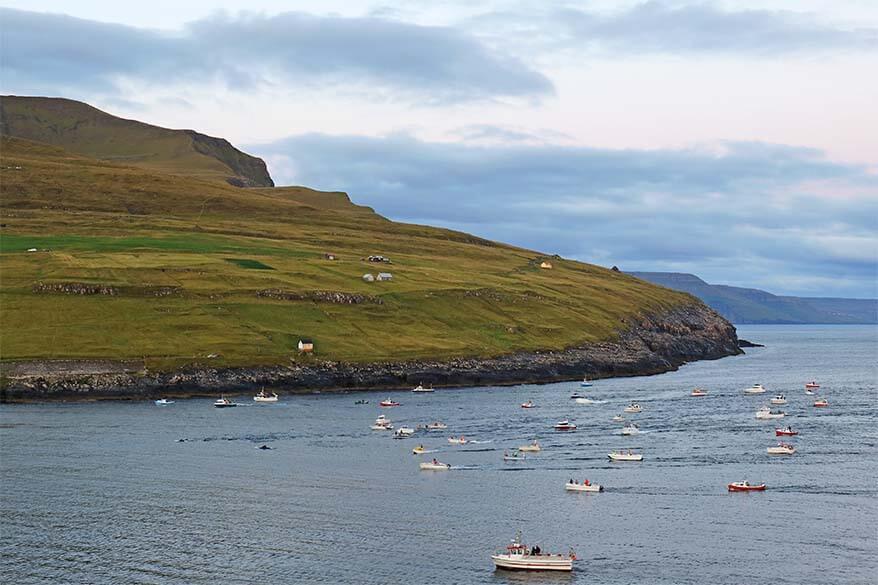
So, these are my tips and practical information for your visit to the Faroe Islands. Want to add anything or ask a question? You can do so by leaving a reply below.
If interested, you can also join our Facebook group for Scandinavia travel and ask your questions/ share experiences there.
Summary of the most popular FAQs
While every season has its charms, the best time to visit the Faroe Islands is between May and September. June, July, and August are the most popular months with the best weather.
While you can expect to see puffins in the Faroe Islands between mid-April to September, the best time to see puffins is between May and mid-August.
Yes, you can visit the Faroe Islands at any time of the year. However, some places on the more remote islands might not be easily accessible in the low season, and tourist facilities outside Torshavn are limited in winter.
Faroe Islands is not a cheap destination, but it’s cheaper than e.g. Iceland. With good planning and smart budgeting, you can make your trip quite affordable. For example, accommodation and restaurants outside of Torshavn are much cheaper than in the city and public transport is very cheap too.
Faroese is the official language on the Faroe Islands, but everyone we met in the Faroe Islands spoke perfect English.
Yes, you can easily visit the most popular places in the Faroe Islands by car. The main islands are connected with bridges and undersea tunnels and there are also car ferries to the other islands. Some islands like Mykines cannot be visited by car, but you can get there by boat or by helicopter.
Depending on where you are coming from, you can visit the Faroe Islands in your own car. There are car ferries between the Faroe Islands and Iceland and also between the Faroe Islands and Denmark.
Yes, the Faroe Islands is a very safe travel destination, probably one of the safest places in the world. The biggest danger is running into some sheep on the road.
More tips for visiting the Faroe Islands:
- Hiking: Best Hikes in the Faroe Islands
- Accommodation: Faroe Islands Hotels
READ ALSO our suggestions for the Faroe Islands itinerary (any duration)
If you found this post helpful, don’t forget to bookmark it and share it with your friends. Are you on Pinterest? Pin this image!
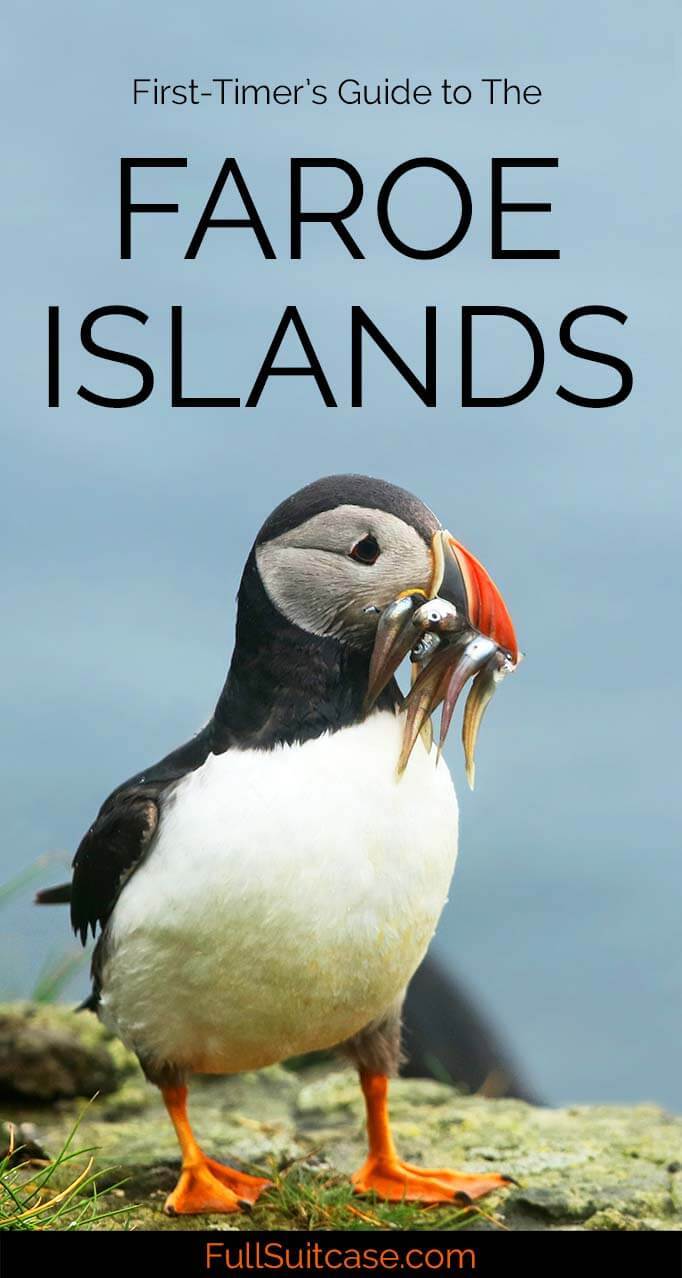



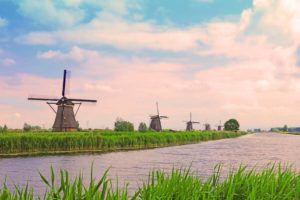

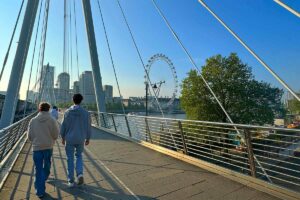

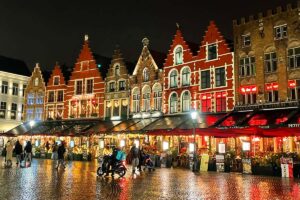
Hi, I must say your article is very helpful a I enjoyed it! I would like to ask you, is possible to travel Faroe island by bike? Do you have any information how it works there? Also is here chance, thay are offering to rent bikes?
Thank you…
Hi Andrej, I am afraid I have no experience with this. But you should be able to find such info online. Just keep in mind that many places are very hilly and the weather can be harsh and change quickly.
Hi Jurga,
Thank you for your valuable insight on the Faroe Islands. It looks lovely.
We’re looking at visiting the Faroe Islands summer of 2024. I’ll be traveling with 3 children. I’ve heard about the Grindadrap. I understand it takes place anywhere between May – September (perhaps multiple times). I respect other cultures and their traditions but I’d rather not be there during this event with my children. From what I’ve read the time and where it occurs really depends upon when whales and dolphins are spotted. Anyone have any additional information that might be helpful regarding this? I reached out to the tourism office but haven’t heard from them.
Hi Monica, I understand your concern, but if you ever want to visit the Faroe Islands, you just have to accept that whaling is still a thing there.
Based on our personal experience, I can tell you that there is indeed a chance of running into such an event when traveling around. And no, there is no way to predict it. It can occur anywhere and at any time.
We saw it twice during our visit. On one occasion, we saw red sea from far, before we even got closer. On another occasion, we saw boats behind whales still in the water. In most cases, even if you see something going on, you can just drive by without actually seeing much, but sometimes you can’t avoid seeing certain things, especially if the road passes close to a harbor.
However, it’s just as likely that you won’t witness any of this during your trip at all.
So it’s really up to you to decide. If you absolutely want to avoid even the smallest chance of seeing any of this, then you would have to research which season is ‘safe’ and travel at that time. Or go somewhere else. Iceland is a great alternative and very nice to do with kids. Our kids loved all the hot pools everywhere. Whatever you decide, for this summer, you have to book asap. Both – the Faroe Islands and Iceland have quite limited accommodation options outside the capital region so it quickly books up. We have tons of information about visiting Iceland on our blog, if you’re interested.
Just read that a weekly flight from New York is starting up. Hope they are ready for an explosion of tourism.
I’m not sure they are ready for a big influx of tourists even on the main islands, let alone the smaller ones… The future will tell, I suppose.
Hi Jurga,
Do you know how much does each ferry ride cost (to Nolsoy and Kalsoy)? The website doesn’t seem to indicate, and I am wondering if I should purchase the travel card if I am going each island once. Do I purchase the ticket at the port on the day I am taking the ferry?
Hi Jean, we just got all our tickets at the harbor. I don’t remember the prices anymore, but it wasn’t expensive at all. It’s a local (and I think heavily subsidized) public transport, so the prices are very reasonable.
Your blog is FANTASTIC … thank you. I’m seriously considering travelling to the Faroe Islands in September 2024 with a photography group and your information is ever so helpful.
Glad to hear that, Glenda. The Faroe Islands is a beautiful destination for a photo tour!
Hi, do you know how likely are they to cancel ferries to Mykines Island? I have the visit to Mykines at the end of my trip and I am thinking if I should extend my stay for a day in case the plan falls through, so I can reschedule and try again. Any advice?
Hi Jean, there is no way anyone can tell you in advance how likely it is that the ferry gets canceled. It really depends on the weather, and yes, it can happen.
So yes, it can be a good idea to foresee some flexibility in your travel plans.
What a great guide! Thank you! My hesitation about the Faroes is around the possibly turbulent flying. Were your flights fairly smooth? For reference, I fly several times per year, but am always a nervous flyer when there is turbulence. I’m alarmed by the reports of the Faroes’ airport having a very short runway! Any insight is more than welcome!
Hi Kelly, I don’t recall anything unusual about our flights to the Faroe Islands. Also, turbulence and short runways aren’t really related.
As I’m sure you know, turbulence is really not something anyone can predict. So if you are used to flying, I really don’t see any reasons to worry about flying to the Faroe Islands more than over other flights.
Have a great trip!
This is the best and most useful short guide I’ve ever read.
Glad to help, Julian. Have a great trip!
I am in love with your blog. Got hooked on to it while trying to plan a day trip in Milan.. Have never read a more comprehensive blog and yet so engaging. Many thanks..
Thank you for your kind words, Monideepa. Really appreciate it.
Happy travels!
Hi Jurga,
This is an amazing blog with so much information. How is the food availability for a Vegetarian (dairy products except eggs are fine)?
Thank you.
Hi Hemang, I can’t really answer this based on personal experience since we eat everything and never really paid attention to this when visiting the Faroe Islands. But in general, all Nordic countries offer good options for vegetarians and I don’t think it will be an issue in Torshavn. I’d be a bit more uncertain about the smaller places where restaurant options are limited, but I really don’t know for sure. I assume you’ll find at least one or two vegetarian options in most restaurants. We are now traveling in northern Norway and every menu here has a (small) vegetarian section.
Hi Jurga, what a great blog-thank you!
One further question -do you know if tipping is common in Faroe Islands, in particular for tour guides? Thank you!
Hi Ruth, as far as I know, it’s not common. However, Americans have introduced tipping all over Europe and I have never met a guide who wouldn’t be happy with a tip. So if the tour/ service is exceptionally good, you can always tip a bit.
Usually, if we tip in Europe, it’s not more than 5-10% at the restaurants (in most countries and cases nothing at all), and maybe 5-10 eur per person for tour guides, unless it’s a very long day tour when we’d probably tip a bit more.
It’s becoming difficult to know what to do, so you can also just ask locals in every country you visit. But in most cases, they’ll just tell you it’s not common or expected, but appreciated.
What about renting a motorcycle to tour the Faroe Islands?
I really wouldn’t know, Jessica. You’d have to do some research and see if that’s possible.
Hi Thanks a lot for your share, it’s quite useful. I am wondering if I plan to go hike there, do i need to follow some group guides? Because I am afraid the trail are not good marked, I and my friends will be losted in the mountain. And also, we don’t drive a car, is it easy to go to the hiking trail without car or by public transport? Thanks a lot again, have a nice day.
Hi Li, if you don’t have a car, you won’t be able to explore many places or do much hiking unless you take a tour (or – for some places, it might be possible, but you’ll need to do a lot more research about public transport and I really can’t help you with that).
So yes, I recommend that you simply book a tour and go with a guide. Then you don’t have to worry about driving or where exactly to hike, and you can see a lot in a short time. Check this website for the best tour options in the Faroe Islands.
Hope this helps.
@Jurga, thanks a lot for your suggestion, now I find a friend who can drive and go with me in summer! I shared your blog to my friend, it’s super helpful!! We got a lot important information from it. Thanks again. I already booked a apartment from the beginning of August, for 10 days.
How long do you think we should rent a car in advance? And do you think it’s necessary to rent a wifi for our car? In case we couldn’t find the way when we drive😂😂
Hi Li, I’d rent a car ASAP! Summer is the peak travel season and last year, in summer, most destinations worldwide had a huge car shortage, so prices skyrocketed. It looks like it could still be an issue this year. So book as soon as you can.
And no, I don’t think you need wifi just to navigate. Everything is well indicated and you can get a road map (on paper, you know ;)) or download the Faroe Islands map on GoogleMaps, or use some other apps that work offline too. So if you just need the wifi for the roads, it’s not worth it.
@Jurga, Hi Jurga, thanks a lot for your suggestion. I will contact my friends and then decide which car to rent. Have a nice day!
Hi! Thanks so much for all these very useful infos! I just have two questions for you: is it manageable in winter or spring to visit it all without driving at all; and is hiking in the Faroe Islands doable for total beginners who want to get into it?
Thank you again for these precious infos!
Hi Justin, if you don’t drive, you won’t be able to visit much unless you take tours. There are plenty of tours though, so that shouldn’t be an issue. See here for pretty much everything that’s available in the Faroe Islands.
Hiking in the Faroe Islands is ok, but the trails are not as well indicated or maintained as in most other places where we hiked. It also depends a lot on the popularity of the hike. For some, you just follow the other people.:) But in winter or early spring, hiking can be tough – wet, muddy, and maybe even snow. So also here, it would be wiser to go with a local guide, especially if you have never hiked before.
Hope this helps.
Do U.S. citizens need visas?
Hi William, from what I see, no, US citizens currently do not need a visa for the Faroe Islands. Faroe Islands have the same requirements as Denmark and the US is on a visa-free list for Denmark (see here).
However, from 2022, US citizens will be required to obtain a sort of visa waiver – Europe Travel Information & Authorization System (ETIAS) to stay in Schengen countries for less than 90 days. It’s going to be similar to what we, Europeans, need when traveling to the US. So I assume that this will also apply to Denmark and thus the Faroe Islands. You can find more information about ETIAS here.
Hello, This is a great travel blog! Thanks so much! I am planning a trip to the Faroe Islands in September. We will have about 8 days. We are most excited about nature (e.g., hiking and bird cliffs, etc.) I saw your recommendation to stay in Torshavn, Gjogv, Klaksvk, and Vagar. I am having trouble figuring out how many nights to stay in each location and in what order. We don’t want to pack too much into one day, but want to have a relaxing trip. Do you have a suggestion on this? Thanks so much! Nicole
Hi Nicole, you don’t absolutely have to stay at various places and can just opt to stay in Torshavn and do day trips. The main advantage of that is that you don’t have to change hotels every night and that you can choose where you go depending on the weather that day. The disadvantage is the long drives and extra mileage on your rental car (most of them seem to still have limited km per day).
A lot will also depend on the available accommodations so see what’s available for your travel dates.
If you stay in Klaksvik (even if just one night), that makes it easier for you to get to the Kalsoy Island ferry well in advance to be sure you can get on it. That’s basically the main reason to stay there. But accommodations are limited, so see what you can find. We stayed one night here.
Gjogv – it’s not really a must staying there, but it is very beautiful and gives you a more ‘Faroe’ feeling than staying in Torshavn. For us, it was one of the nicest places we stayed in, somehow it felt like a more authentic experience… In Gjovg itself, you can see everything in just an hour or two. Or you can also go hiking and fill a good part of the day. Another possibility is hiking to Slættaratindur (the highest peak of the Faroe Islands) nearby. This would be about half a day as well, but it’s also a bit hard to predict – when we visited, this area was in the mist and hiking was impossible. So depending on what you want to do, you could stay 1 – 3 nights there. We stayed in Gjogv for 1 night.
As for Vagar, we chose to stay there at the end of our trip – it was easier for Mykines Island and other attractions on Vagar itself and close to the airport. We stayed here for 2 nights.
You can see all the details of how we did it in our Faroe Islands itinerary – that article also has suggestions for shorter trips.
Once again, you can also just make it easy for yourself and stay in Torshavn – it’s really your choice. There’s now also a new tunnel between Torshavn and Runavik, which makes the drive to the northern islands somewhat shorter. It’s about 45 minutes drive from Torshavn to Klaksvik via this tunnel, whereas otherwise, it’s about 1h10.
One more thing – we found that food was much cheaper in the rural areas than in Torshavn restaurants. And if you are on a budget, you’ll likely find cheaper accommodations outside the city. But for more luxury, really good hotels (see our Torshavn hotels guide for more info) and restaurants, and a lively atmosphere in the evenings, Torshavn is definitely the place to be.
Good luck with the planning!
I have a question, if I’m fully vaccinated am I able to visit the islands? I can’t find a definite/clear answer saying yes or no. I know for Iceland I can if I’m vaccinated, but not sure if it is the same for the islands. Any and all help would be greatly appreciated. Awesome blog by the way. It’s very in depth. Hope to use it, if I am able to visit.
Hi Kique, here’s what I found on the official website (applicable at this moment): “Visitors who have completed their vaccination at least eight days prior to their journey, are not required to self-isolate after arrival in the Faroe Islands. However, these travellers are still required to test upon arrival and to take a follow-up test six days after arrival.”
However, you should also check if there are any specific requirements for the country you are traveling from and also if you can get there without any restrictions (this would depend on where you fly from/via).
It’s really not straightforward at the moment and they clearly say that “the Government advises against all non-essential overseas travel” now. A lot will change in Europe in the next few months, though, as more people will get vaccinated (it’s only 10-15% at the moment, so most European countries will not ease the restrictions further until the majority of the population here is vaccinated as well – supposedly towards the end of June).
Anyway, it seems that it’s definitely possible for vaccinated travelers to visit the Faroe Islands now already, but to be safe, I’d plan a trip later this year (late summer-early autumn?) and keep an eye on the official website for any changes. I’d also make sure that any bookings you make are cancelable, just in case.
@Jurga, thank you for getting back to me on this. That’s where my confusion was at, it doesn’t say yes or no. Just advising against. I’m from the states, but again, Denmark has put the world on red so I wasn’t sure if it makes a difference or not. And I can’t find any government social media handle to hassle them as well. But as of now, I think Iceland looks doable. Seeing how flights are somewhat cheap at the moment. I appreciate the help!
Hi Kique, as I said, the reason for advising against any travel is because the situation is far from under control and only a very small part of the European population has been vaccinated at this moment. So while some countries/ territories already allow fully vaccinated travelers without quarantine, they are also not encouraging tourism at the moment.
But things are changing all the time and it’s expected that a lot will improve after June when most of the European population should be vaccinated. So – once again – I think it’s quite safe to start planning a trip for later this year, but I wouldn’t advise traveling at this moment.
Iceland is a somewhat easier place to visit, mostly because they are more clear with the rules and you have direct flights to Iceland from many places in the US and in Europe. So if you are looking for a place to visit in the next few months, then I think that Iceland would be a safer choice. Just be sure that you have all the required documents. You can find more info for your trip and links to the official sites and current document requirements in our Iceland travel guide.
Stay safe and happy travels!
Wonderful! What an excellent and informative guide!
Glad you found this useful, Maggie. Good luck with the planning and have a great time in the Faroe Islands!
Is there cell service on the Faroe Islands? We would be coming from the US.
Hi Tammy, yes, there’s cell service on the Faroe Islands. It might not work everywhere as well as it does in towns, but in general, yes, no problem.
Jurga,
What about the northern lights? Did you manage to see them while you were there or is it just certain times of the year. We are thinking of going in September and was wondering about the chance to see them. Gret blog, super informative and I have take away heaps of valuable information from it.
Hi Brian, in general, you can only see the Northern Lights between September and March-early April, but this also highly depends on the location. The Faroe Islands are much lower and further from the aurora belt than for example Iceland, and not even comparable to places like Tromso in Northern Norway that have the prime location for auroras. So September will likely be too early for auroras in the Faroe Islands. You also need lots of darkness for that and the days are still quite long in September… From everything I read, the best time to see the Northern Lights in the Faroe Islands is in winter, from about November to February.
Furthermore, the weather on the Faroe Islands is highly unpredictable and cloud coverage makes it impossible to see auroras. So I really wouldn’t count on it in September, unless an extremely powerful solar activity happens…
But it should be a good time for hiking and everything else, except puffins. They will also be long gone by September.
Hope this helps.
WOW, excellent travel blog! You’ve made me an instant fan, and I’ll definitely return for more travel info. We love to travel independently like you do, so you blog was very helpful!
Glad to hear that, Gary. Good luck with the planning and hope you can visit the Faroe Islands soon! It’s a beautiful nature destination and keeping a safe distance from others is usually not a problem. 🙂
Happy travels!
Well informed and confirms what we experienced in 2015, when we Airbnbed. Would stress the duty free on arrival, which also applies to Iceland. Nice to fly from Edinburgh for one hour only. A great pity the Smyril line no longer includes U.K. ports.
Thanks for sharing your experience, Christopher. We didn’t buy any alcohol, but indeed, Duty-Free at the airport is the best option for that, in all the Nordic countries.
This info aided me a lot, just what I was searching for our upcoming trip to the Faroe Islands! Thanks
Glad to hear that, Jeannie. Enjoy your trip!
Hi,
I visited this site for some information on Faroe Islands as I probabbly won’t be able to travel outside of Europe this year…They seem more than a worthy alternative.
I must say your knowledge on this place is massive and the way you write it down is very readable and informative. Thank you.
I was just wondering; normally I hardly book any organised tours as I’m quite adventurous but as I’m also a solo traveller my budget is rather low. So I have the idea I may be cheaper off by joining this 8-day tour option you mentioned somewhere in your blog.
Could you please inform me on the above?
Thanks in advance
Tobias
Hi Tobias, yes, indeed, Faroe Islands are a great place to visit this year if you can make it happen. Beautiful place and so few people…
It’s not cheap to rent a car, so it’s likely that if you are on your own, organized tours might be a better idea for you. But it’s really impossible for me to tell as there are so many factors that determine your trip price.
I don’t think there will be many big groups this year, especially for the multi-day tours, so it’s quite likely that the tours will have just few people on them.
There are many options available and one of the best places to find a suitable tour is this local website. They have everything that’s available in the Faroe Islands.
If you indeed have 8 days and want to explore the islands to the fullest, then take a look at these 8-day tours – one of them is more hiking-oriented, whereas the other one is more general, which would be my personal choice I think. Please note that these tours already include accommodation (7 nights), airport transfers, ferry tickets, 6 day tours, lunch, etc.
If you rather just do day tours with a local guide, but arrange everything else yourself (accommodation, etc.), then you may want to look into this 6-day tour. I think it’s one of the best options for travelers like yourself. It gives you complete flexibility in terms of hotels (you can find our accommodation suggestions here). Furthermore, you can also expand the trip a bit to spend some extra time in Torshavn in the beginning and/or end of the trip, from where you can also take a ferry to Nolsoy Island, for example. This 6-day tour covers ALL the main highlights with a small group. If I was going solo, this is the tour I’d be looking into.
Hope this helps.
Hello Jurga, many thanks for your informative write-up! I am planning to visit the Faroes with my adult siblings and 69 year old father. My dad has low vision which restricts his mobility but otherwise is physically fine. Would the Islands still be a suitable destination for him? Any other practical advice you might have would be welcome, as there aren’t much resources for accessible travel for the Faroes. Thank you!
Hi Ru, I really wouldn’t know.
Most of the things you’d be doing in the Faroe Islands involve lots of walking/ hiking, driving, and boat trips and it’s all about the beautiful nature around you… If one can’t see it, I’m not sure if they would actually enjoy the trip… Not to mention that it will definitely not be easy to get around because there aren’t easy and simple walking paths in most places…
I guess traveling in the Faroe Islands is comparable to any other nature destination. So if your dad is ok visiting e.g. US National Parks, he should be fine in the Faroe Islands too. But it’s really something that only you yourselves can judge and decide.
Many thanks for taking the time to write this guide, it has been really helpful. We are visiting the Faroe Islands in some weeks and your information has made our mind up for planning the trip. By the way, your pictures are amazing, hope to go back home with the same nice postcards from there!
Thank you for taking the time to leave this feedback, Diego. Really glad to hear that our blog inspired you to plan the trip to the Faroe Islands. Enjoy it!
Are there tours around the islands? We are from Australia and dont think we could cope the driving on the other side of the road. We are thinking of going in Sept/Oct then on to Iceland. The ferry does sound appealing…
Hi Joanne, yes, there are quite some tours and if you don’t want to drive, you could probably just opt to stay in Torshavn and do some day trips. See here for all the best tour options in the Faroe Islands.
If you have 4 full days, look at a 4 days summer package – you get to see the best of the Faroe Islands without having to arrange anything yourself. From what I see, these 4 days really cover all the best places that are doable from Torshavn.
Hope this helps. Enjoy your trip!
P.S. Edit to add, this tour picks you up from the following hotels in Torshavn:
and a few others. We stayed in Hotel Foroyar, but without the car you may want to stay closer to the center – so hotel Hafnia, 62N Hotel, or hotel Torshavn are probably better options. Just make sure to check availability before you book anything – accommodation is quickly fully booked in the Faroe Islands, so reserve that first.
Thank you so much for this guide.
Faroe islands seem very appealing and could be our next destination!
Go for it, Sofia. It’s such a unique and beautiful place and still very authentic. It’s a bit like Iceland was some 10-15 years ago before the whole world found out how amazing it is… I think the Faroe Islands won’t be a secret for much longer…